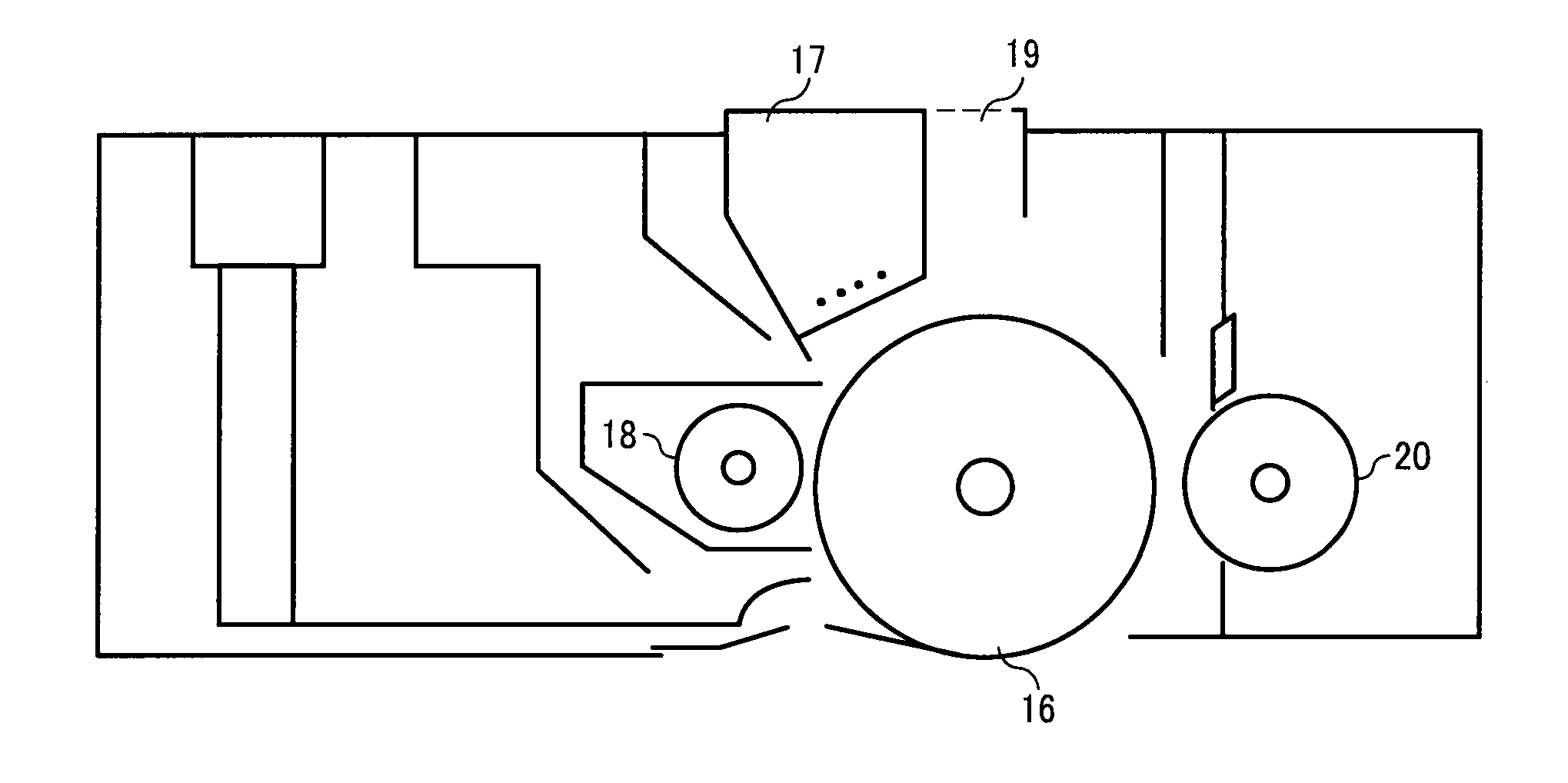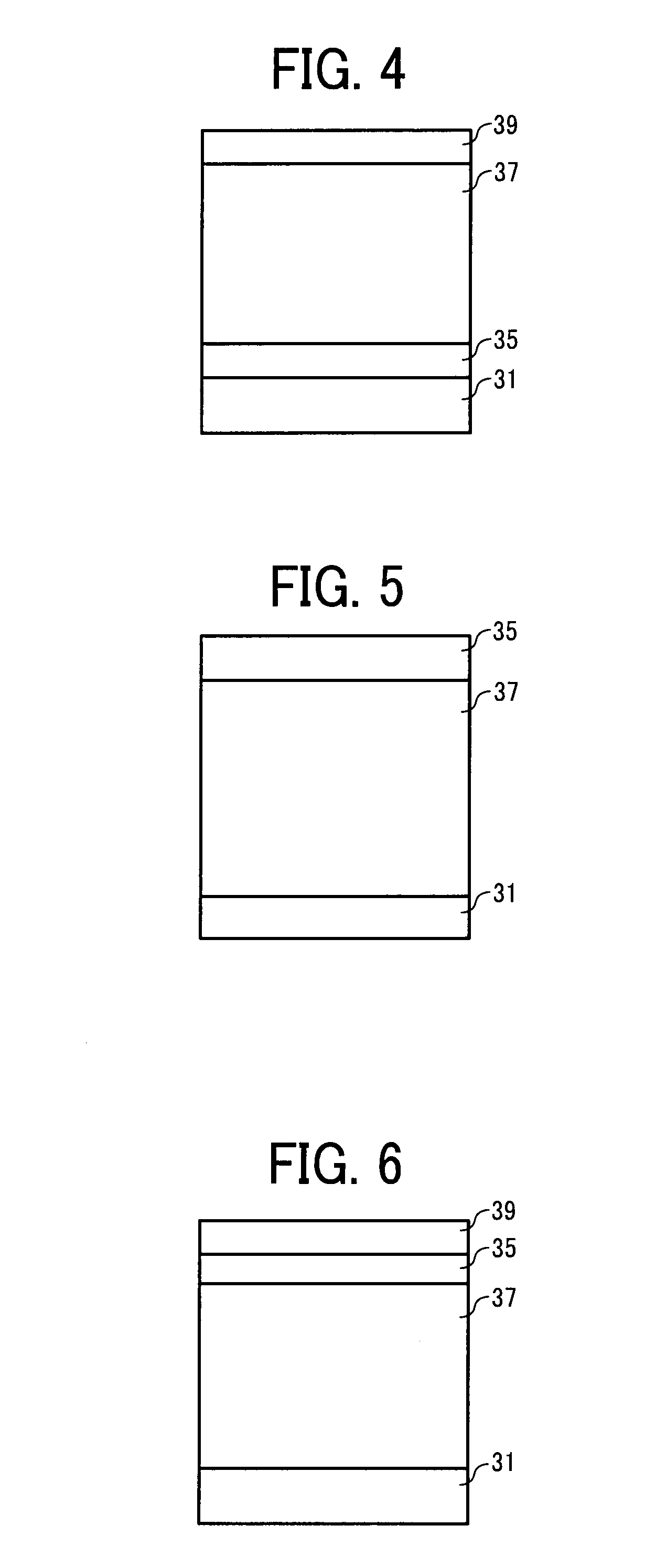Electrophotographic photoreceptor, image forming apparatus, and process cartridge
- Summary
- Abstract
- Description
- Claims
- Application Information
AI Technical Summary
Benefits of technology
Problems solved by technology
Method used
Image
Examples
manufacturing example 1
Preparation of Compound No. 20
[0158]A mixture of 2.68 g (10.0 mmol) of naphthalene-1,4,5,8-tetracarboxylic acid dianhydride (from Tokyo Chemical Industry Co., Ltd.), 30 ml of N,N′-dimethylformamide, and 3.68 g (20.0 mmol) of 1,1-diphenylhydrazine (from Tokyo Chemical Industry Co., Ltd.) was agitated for 2 hours at 60° C. under an argon gas stream, and 100 ml of water were added thereto. The precipitated crystals were collected by filtration, and dried in a reduced-pressure heating drier. Thus, 3.43 g (i.e., the yield was 57.1%) of brown crude crystals were prepared. The brown crude crystals was then treated with a silica gel column, using a mixed solvent of toluene and ethyl acetate in a volume ratio of 20 / 1 as eluant, recrystallized with toluene, and dried in a reduced-pressure heating drier. Thus, 7.02 g (i.e., the yield was 29.7%) of orange-red crystals of the compound No. 20 having the following formula were prepared:
[0159]The result of ultimate analysis is shown in Table 1.
TABL...
manufacturing examples 2 to 5
Preparation of Compounds Nos. 1, 10, 15, and 37
[0162]The procedure for preparation of the compound No. 20 in Manufacturing Example 1 was repeated except that the hydrazine compound (i.e., 1,1-diphenylhydrazine) was replaced with other compounds. Thus, the compounds Nos. 1, 10, 15, and 37 were prepared.
[0163]The measurement results of these compounds are shown in Table 2. The infrared absorption spectrums, measured by a KBr pellet method, are shown in FIGS. 11 to 14.
TABLE 2Manu-Ultimate Analysis (%)facturingCom-DecompositionMeasured ValueExamplepoundYieldPoint(Calculated Value)No.No.(%)(° C.)CHN2137.432861.284.5215.84(61.36)(4.58)(15.90)31061.335276.904.908.78(76.81)(4.91)(8.53)41556.538070.684.1011.98(70.58)(4.23)(11.76)53746.536276.224.369.02(76.42)(4.49)(8.91)
manufacturing example 6
Preparation of Compound No. 38
[0164]A mixture of 2.68 g (10.0 mmol) of naphthalene-1,4,5,8-tetracarboxylic acid dianhydride (from Tokyo Chemical Industry Co., Ltd.) and 25 ml of N,N′-dimethylformamide was agitated at 80° C. under an argon gas stream. A solution including 0.61 g (10 mmol) of 1-methyl-1-phenylhydrazine (from Tokyo Chemical Industry Co., Ltd.) and 10 ml of N,N′-dimethylformamide was dropped therein over a period of 2 hours. The mixture was further agitated for 30 minutes at 80° C., and subsequently a solution including 0.99 g (10 mmol) of 1-benzyl-1-phenylhydrazine (from Tokyo Chemical Industry Co., Ltd.) and 5 ml of N,N′-dimethylformamide was added thereto. The mixture was further agitated for 2 hours at 80° C. The mixture was poured into 100 ml of water, and the precipitated crystals were collected by filtration, and dried in a reduced-pressure heating drier. Thus, brown crude crystals were prepared. The brown crude crystals were then treated with a silica gel column...
PUM
 Login to View More
Login to View More Abstract
Description
Claims
Application Information
 Login to View More
Login to View More - R&D
- Intellectual Property
- Life Sciences
- Materials
- Tech Scout
- Unparalleled Data Quality
- Higher Quality Content
- 60% Fewer Hallucinations
Browse by: Latest US Patents, China's latest patents, Technical Efficacy Thesaurus, Application Domain, Technology Topic, Popular Technical Reports.
© 2025 PatSnap. All rights reserved.Legal|Privacy policy|Modern Slavery Act Transparency Statement|Sitemap|About US| Contact US: help@patsnap.com



